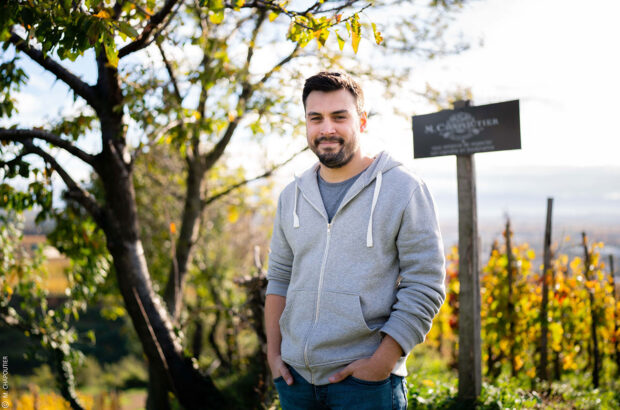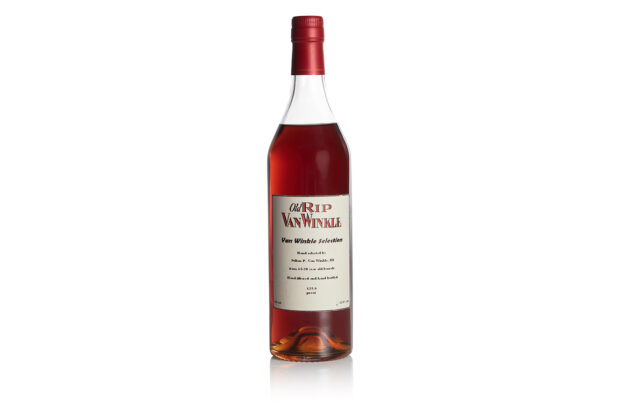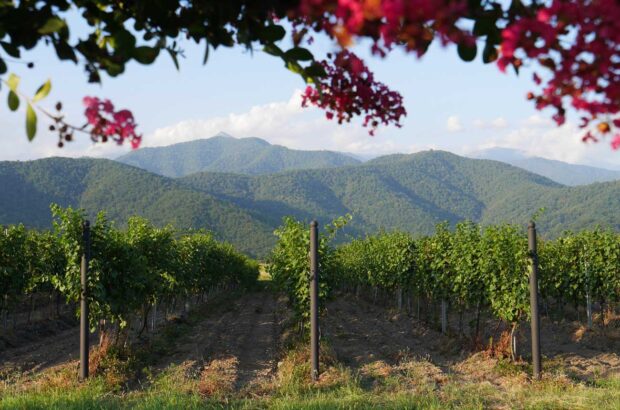People went 'crazy' when news broke that a US family had bought the historic Vietti winery in Barolo country. Jane Anson visited Piedmont to test the local sentiment and get the inside track on the sale...
The arrival of The Americans was pretty much the sole subject of conversation in Piedmont when I was there in October 2015.
Then just as things died down, the same Americans picked up another piece of prized Piedmontese land a few weeks before I arrived back there this summer. The Vietti sale started up the gossip machine all over again.
It turns out, as is so often the case in this tiniest of worlds, that one in a roundabout fashion led to the other. Head back to last year’s harvest, and the first purchase made by the Krause family. Owners of Kum & Go supermarket chain that counts 400 stores across eleven states of mainly Midwest America, Kyle Krause was the surprise buyer of Enrico Serafino, a 19th century firm owned by the Campari Group based in the Roero. It was a firm that was making a range of wines from sparkling Asti to nebbiolos of Barolo and Barbaresco but had lost some of its glamour over recent decades, and perhaps – or so the local reaction went at the time – there was a certain logic to its going to a big retail group.
Not so with this year’s purchase. In buying Vietti winery, Krause has truly got a local treasure. Set on the stunning slopes of Castiglione Faletto, Vietti is a winery that dates back to the mid 19th century and that was under the ownership of the fifth generation of the Currado family. It makes highly prestigious single vineyard wines from over 25 MGAs (the equivalent of Burgundy climats) across 90 acres of Barolo and Barbaresco, and the outrage that met news of the purchase gives you some idea of how highly this place is regarded.
‘I’m not sure I can remember such an aggressive reaction to a sale,’ Luca Currado told me this week, over what may have been my most enjoyable phone conversation of the year. Anyone who thinks that this is a man who has sold out should really take five minutes to speak to him.
‘It caused a crazy stir from many people who knew nothing about the reality,’ said Currado, who is remaining in place as director and winemaker. ‘I didn’t want to sell, but when I was given no choice, my overriding aim was to not split up the incredible grands crus lands that we have. And the only way that I could accept to stay on was to be assured that I would have 100% freedom to make the wine as I always have’. He paused, then decided that he was not being clear enough. ‘No, 200% freedom.’
Ironically, it might never have happened if it hadn’t been for Roberto Conterno. The Enrico Serafino success was preceded by a failed attempt to buy the historic Arione vineyard in Serralunga d’Alba that was being sold by Maurizio Rosso. The vineyard’s neighbour Roberto Conterno used his pre-emption right under Italian law to stop Krause’ purchase in favour of his own.
It was this that meant Krause went back to the drawing board and finally succeeded in buying Erico Serafino. Which, it turns out, was also the subject of a purchase bid by the Currado family of Vietti.
Are you keeping up? Basically, this meant that Vietti had its long-term prospects weakened, and pressure from the wider family members to sell up was increased. And to everyone’s surprise, this was when they looked to the American family that had bettered them in the Serafino bid.
‘We had many offers for Vietti, including from prestigious French brands, but we had watched Kyle Krause purchase several excellent individual pieces of vineyard land such as Mosconi and Bricco Ravera in Monforte d’Alba, and felt that he would respect our desire to keep Vietti focused on highest quality Barolo’.
It also turns out that the Currado family has close historical links with the United States. Luca Currado’s great grandfather emigrated to Boston in 1870 and lived there for 35 years before moving back to Piedmont (where the family would go on to bottle one of the first single vineyard Barolos in the shape of Rocche di Castiglione). Currado himself spent two years in California at Long Vineyards and Opus One.
‘I brought back a sense of experimentation from California,’ Currado says today. ‘I was there at a time when there was a real sense of possibility from winemakers like Randall Graham, and it helped give me the confidence to focus on what I wanted to do with our wines when I came back into the traditional world of Barolo. I have always rejected the idea of a generic Barolo wine and I intend to keep working against it, through increasing definition of individual terroirs. I don’t have a crystal ball, but I believe this new partnership can support that’.
Vietti wines to try
Vietti Barbera d’Alba Tre Vigne 2013
This is soft and light, supple red fruits and a really quite intense aromatics of redcurrant leaf that stays long after you have swallowed the wine itself. The acidity is certainly on the gripping side, but this makes for a juicy and thoroughly enjoyable experience. You want to know what it means when a fragrance fills your mouth? Here it is. 13%abv. 90 points / 100
Vietti Barolo DOCG Castiglione 2012
Clear liquorice root and gentle wild cherry from the first moment. This is not one of Vietti’s single vineyards, but is blended from around 15 of their 20 sites across Barolo. The exact number changes each time, but all are prestigious terroirs that could easily be given grand cru distinction if Barolo ever gets round to this. Intense, tight, full tannins, this is a beautifully poised and carefully placed nebbiolo, a hugely impressive showing that has years of life ahead of it. 14%abv. 93
Vietti Barolo Rocche di Castiglione 2012
One of most prestigious MGAs in whole of Barolo, know for its finesse and fragrance, and its unusual white soils. This is the only one of the three tasted here that truly should not be opened yet, even with a good few hours carafing. Do yourself a serious favour and hold off for a few more years to allow the rose petal fragrance to really unfurl. Already it is clear that this is going to be a beautiful wine, made traditionally with almost three years in Slovenian oak. Intense and textured. 14.5%abv. 95
More Jane Anson columns:

Jane Anson: Bordeaux’s oldest vines
What can be learned from 200 year old vines...

Anson: Bordeaux wine for craft beer drinkers
Can Bordeaux appeal to the craft beer generation?...

Anson: A wine treasure trove to visit in Piedmont
Jane Anson visits Piedmont wine bank...

Anson: Whole bunch winemaking shakes up Bordeaux
There's a new trend in town...

Jefford and Anson: Most read columns of 2016
Favourite pieces from our Decanter.com columnists....







